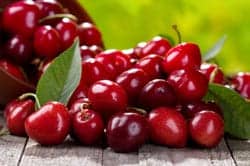by Anthony J. Brown, MD
Last Updated: 2007-10-01 17:00:19 -0400 (Reuters Health)
NEW YORK (Reuters Health) – Treatment with gambogic amide, which is derived from a chemical found in the Garcinia hanburryi tree of southeast Asia, protects against neuronal cell death and reduces infarct size in an animal model of stroke, new research shows.
By binding to the transmembrane tyrosine kinase A (TrkA) receptor, nerve growth factor (NGF) plays an important physiologic role in promoting neuronal survival, plasticity, and neurite outgrowth, the researchers explain in the October 1st Early Edition of the Proceedings of the National Academy of Sciences. Gambogic amide was identified with a high-throughput screening assay that looked for small-molecule agonists of the TrkA receptor.
"Animal studies and clinical trials demonstrate that NGF has great therapeutic potential," senior author Dr. Keqiang Ye, from Emory University in Atlanta, told Reuters Health. "However, as a protein, it has a few inherent drawbacks as a drug. To find a small drug that functionally mimics NGF will be a great candidate for treatment of various neurodegenerative diseases including Alzheimer’s disease."
Gambogic amide binds to TrkA, but not to other transmembrane tyrosine kinase receptors, Dr. Ye and colleagues report. In addition to inducing tyrosine phosphorylation, the compound caused downstream signaling activation.
Like NGF, gambogic amide prevented glutamate-induced neuronal cell death and promoted neurite outgrowth. As noted, treatment with the agent reduced infarct size in a middle cerebral artery occlusion model of stroke.
Dr. Ye said that further studies are needed to understand the pharmacokinetics and bioavailability of gambogic amide. "The answers to these questions will be essential for our next clinical trial experiments…Hopefully, in the near future, we could push this drug onto the market for neurodegenerative diseases treatment."
Proc Natl Acad Sci USA 2007.




